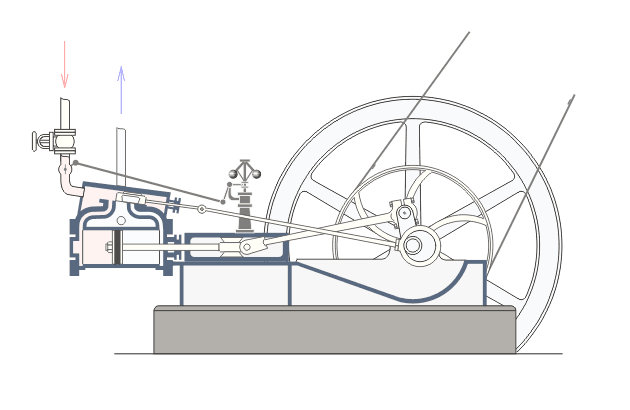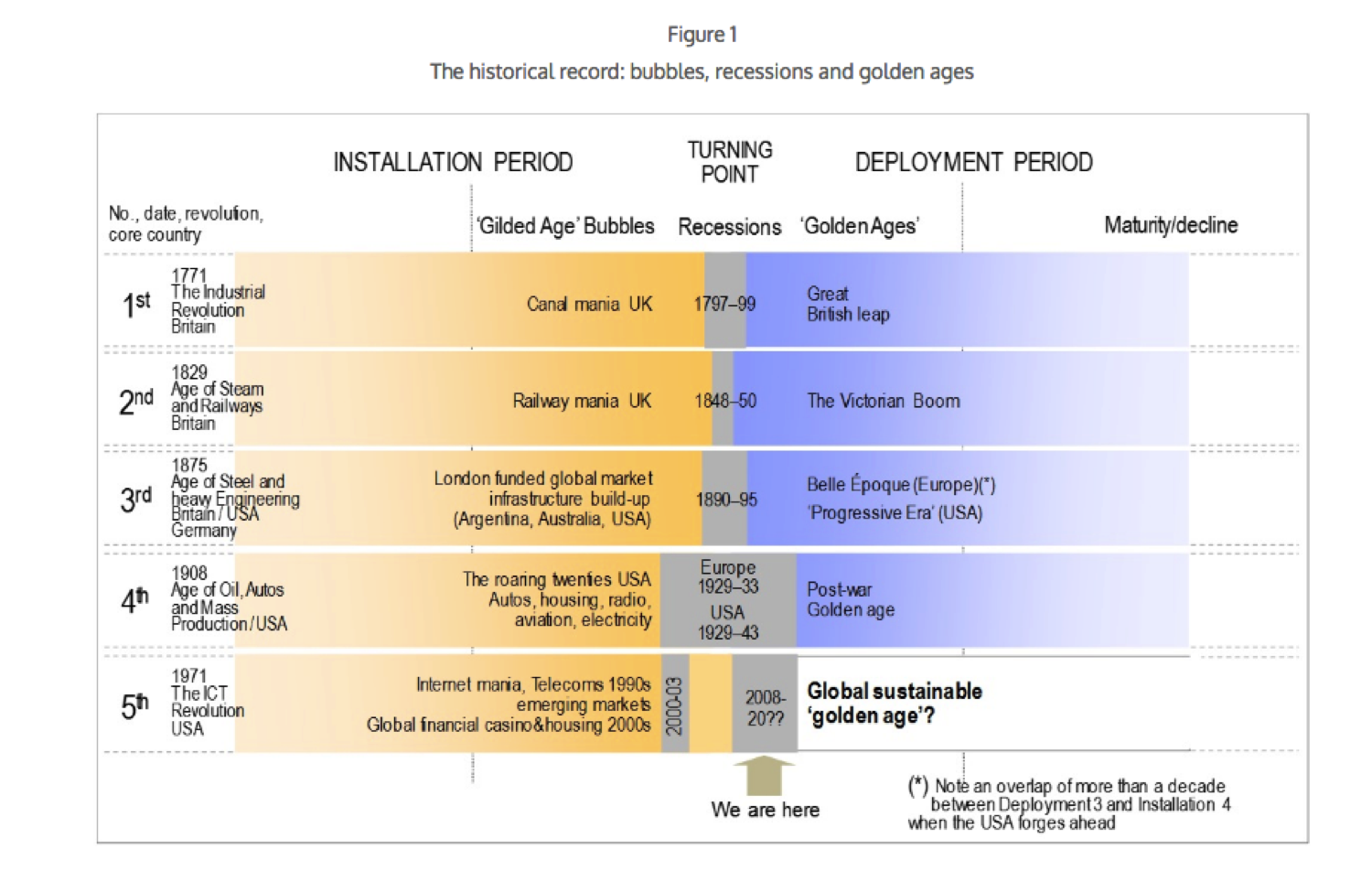Like business and politics, futurism and foresight are susceptible to short-termism, shallow historical perspectives, and a focus on parts not the whole.
That’s not necessarily bad, but you need to recognise what perspective you are taking. Good foresight needs to balance the tension between detail and distance. As one interviewee noted for the Thinking the unthinkable report:
“I wish I learned how to have a microscope in one eye and a telescope in the other at the same time. You’d get a massive headache! It’s hard to do. But you have to do both”.
Technological trends
Most of the focus of reports on technological change (or disruption, or revolution, pick your preference) are closer to the microscopic end. Catalogues of technological trends, or deep dives into particular technologies, and what they’ll lead to. They populate a spectrum from “Hell, yeah!” to “Hell, no!”
Bill Gates, an example of the former, has identified 10 “breakthrough” technologies - everything from power generation and carbon capture, to safer pregnancies, cancer vaccines, better toilets.
While the likes of Evgeny Morozov see nothing but the dead hand of capitalism.
In between are often more detailed analyses. Deloitte’s nine digital technology trends and forces, Munich Re’s tech trend radar, and Accenture’s “post-digital” trends are targeted at what businesses need to think about or do over the next few years.
With more of a policy focus are reports like “Industry 4.0” and the second machine age.
And then there’s the pop-futurism, such as Gerd Leonhard’s 10 technology “megashifts”.
These are often useful analyses that help highlight changes and their potential implications. However, they can suffer from what my previous post called one-way thinking, and from what others have noted as “passive determinism” - giving the technologies too much influence or agency and obscuring business, social and political decisions required to enable or manage them.
These approaches to technological trends are also susceptible to policy shopping lists - incremental or piecemeal responses. Such as more funding to artificial intelligence R&D, a greater emphasis on ethics and inclusivity, new or relaxed regulations, more resources to education, universal basic income schemes, etc.
That’s fine if you are operating within a relatively stable system. But what if there is a bigger revolution going on? Singing at the barricades won’t help much.
A broader revolutionary perspective
Carlota Perez is one of those who wields a telescope rather than a microscope. She is good at pointing out the limitations of assuming that the technologies themselves, rather that socio-political factors, shape the future. An economic historian she is known for her work on technological revolutions, and continues the Schumpeter thesis of “creative destruction.”
Perez has identified five technological revolutions over the last three centuries. These are based around a suite of technologies and innovations, rather than one in particular. The specifics and length of each differ, but they share similarities and provide a useful framework for considering the implications.
The common pattern is an “installation” phase where the new technologies emerge, which attracts lots of money, leading to an investment bubble. The bubble bursts, causing a recession. After which comes a shift from investment to deployment, which leads to a “golden age” for a period of time.
Source: Carlota Perez
The current revolution, which Perez considers started in 1971, she calls the “Age of information technology and telecommunications” (or the ICT revolution).
So what?
An interesting academic analysis you may think. But she draws a parallel between now and the 1930s, with growing inequality, “risk-averse finance with trillions of dollars sitting on the sidelines”, social unrest and populist leaders.
A major inference that she takes from her analyses is that now, as in the previous revolutions, there is a need for political “revolution” too. The state, she contends, has played a critical role in the previous four revolutions in creating the “golden age”. It is not the time for a continuation of the last few decades of trying to get government out of the way. Part of that is, in her opinion, what contributed to the bubble and it’s bursting.
Perez believes “imaginative and bold” policy responses are needed, similar to the scale and novelty made by John Maynard Keynes, F.D. Roosevelt, and others in the 1930s. What doesn’t work, she says, is looking back with nostalgia and trying to hold onto old practices.
Her examples of what’s required include schemes such as to tax “bads” rather than “goods” to incentivize sustainability. She also thinks that structural changes to government will be necessary to move into a “green golden age”. In this respect she agrees with some of the criticism of the inertia and bureaucracy of governments, but disagrees with making government weaker.
She advocates modernizing and rebuilding the skills and attractiveness of government, by getting out of the “command and control” model. As with the education and industrial sectors, today’s government structures and functions are largely products of the 1940s and 50s.
Revolution also means a shift toward consensus-style policy making, involving the public and business sectors, rather than the party-in-power policy making. Central government would also need to relinquish some powers and decision making to pan-national organisations (since some of the big environmental and economic issues are global). Other powers should be decentralized to local governments.
Some of these governance ideas overlap with Mariana Muzzucato’s thoughts on the Entrepreneurial State.
That is a very different approach and scale than simply trying to stay up with what are the emerging technology trends, and tweaking policies and services.
“Systemic change in the economy requires a systemic response across the board, not just band-aid solutions for each of the problems encountered in the process of creative destruction that characterises such major technology shifts.” Perez
What about New Zealand?
New Zealand usually tends to go with the band-aid approach. Housing, health, environmental protection, urban planning, being cases in point.
Transformational talk is cheap in government regardless of political persuasion. What tends to happen is incrementalism. A bit of devolution here, public-private partnerships there, some regional economic development funding sprinkled all around. Being incremental can be a sensible option if there is a bigger longer term goal it is all working towards, but that rarely seems to be the case.
In the technology sphere there is some useful activity going on to modernise government as a digital enterprise. There has been an assessment of algorithms being used by agencies, data privacy guidelines, and creation of an AI Forum. Helpful, but not a revolution in the making.
The future has a rhythm
Mark Twain quipped that “History doesn’t repeat itself, but it often rhymes”. Those rhythms propagate forward too.
Perez doesn’t shy away from the fact that such change is hard. What she emphasises is that a model like hers (or another robustly constructed one) provides a useful frame of reference, an early warning tool, that can provide criteria to guide policy making and the creation of “viable and realistic proposals” to achieve their goals.
Foresight too often focuses on what’s ahead. Good foresight needs to combine the past, present and future so the nature of the problem (or opportunity) is better understood, and effective responses that address the cause and not just the symptoms can be foreseen.
Featured image: Wikimedia CC BY-SA 3.0

